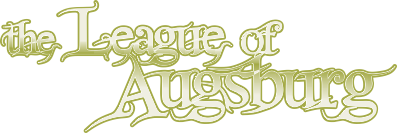Uploaded 65 photos of the Re-enactment, some great display of uniforms and artillery for you
to feast eyes upon.
http://grimsbywargamessociety.webs.com/
Since 1337 the political and military feud between the Yorkists and Lancastrians (to see which branch of the royal Plantagenet family would rule Britain) had plunged the country into a sustained period of civil war. Over the years the fortunes of each side had often changed but finally the Yorkists gained the upper hand. Edward Plantagenet removed King Henry VI from the throne and was crowned King Edward IV in his place. Henry VI was imprisoned but his wife, Margaret of Anjou, and son Edward of Westminster (Lancaster), the Prince of Wales, continued their struggle for power from their base in France.

how to screen capture

imgurl
In 1469 Richard Neville, the 16th earl of Warwick changed sides and later raised an army against King Edward IV. Margaret and Prince Edward set out from France to join forces with Warwick and reclaim the throne. However, when Warwick's army clashed with King Edward's at the Battle of Barnet the Lancastrians were soundly defeated. Warwick himself was killed on the same day that Margaret of Anjou arrived in Weymouth with her small army comprised largely of French soldiers. Realising that her only hope was to meet up in Wales with Jasper Tudor, 1st Duke of Bedford, Margaret headed north with the intention of crossing the River Severn at the city of Gloucester.

how to print screen on pc

screen shot

free pic
Unfortunately for her King Edward had raised an army and was in pursuit. Gloucester sealed its gates against the Lancastrians and Margaret was forced to head even further north to Tewkesbury.
King Edward caught up with her on the 3rd of May 1471 and realising that they could flee no further the Lancastrians halted south of the town and prepared to fight.

screen shot software

image hosting more than 5mb

picture share
The following morning their army divided into three sections known as battles. The most western flank was commanded by Edmund Beaufort, 4th Duke of Somerset, the centre by Baron Wenlock and Prince Edward and the eastern flank by John Courtenay the 15th Earl of Devon The area that they had chosen was known as the Gastons and was bordered by a small brook on the western side and the Swilgate River to the west. The Yorkists moved into position and also divided into three battles Richard, Duke of Gloucester took the western flank, King Edward the centre and Lord Hastings the eastern flank.

screen capture

image hosting websites
The battle started when Gloucester opened fire on Somerset and King Edward's battle attacked Prince Edward and Baron Wenlock. Seeing an opportunity to cut off the king, the Duke of Somerset swung around through the hedgerows towards the centre. He was beaten back and then attacked by Richard, Duke of Gloucester as well as being ambushed by 200 mounted soldiers that King Edward had hidden on a nearby wooded hill.

upload
Somerset's forces panicked and fled towards the ford across the River Severn. The Duke of Somerset fled first towards the centre where he accused Baron Wenlock of cowardice before killing him with a mace - some say a battle axe. Realising that the battle was lost the Lancastrians fled in all directions.

windows screenshot program
Those that fled west were caught in a field near the Avon river and so many were killed that the area is still known today as the Bloody Meadow. Those that fled east were massacred as they tried to cross the Swilgate River. Many other Lancastrians headed for the town and tried to cross the Avon at an old mill. Around 30 Lancastrian nobles, including the Duke of Somerset, sought sanctuary in St. Mary's Abbey which was just north of the battlefield. Margaret of Anjou is said have fled nine miles northeast to Little Malvern were she hid in a priory. Some historians claim that Prince Edward was captured after the battle by King Edward's brother George Plantagenet, 1st Duke of Clarence, and executed on the spot. Others claim that Prince Edward was killed on the battlefield during the fighting. Either way the battle was over as was the current phase of the war. Historians estimate that over 2000 Lancastrians died at the Battle of Tewkesbury. Two days later on the 6th of May 1471 the Yorkist forces stormed the Abbey and after a some perfunctory trials executed most of the Lancastrians who had taken shelter there. Margaret of Anjou was captured and paraded through London alongside the victorious King Edward before being imprisoned. That same night King Henry VI mysteriously died in the Tower of London.
http://grimsbywargamessociety.webs.com/


